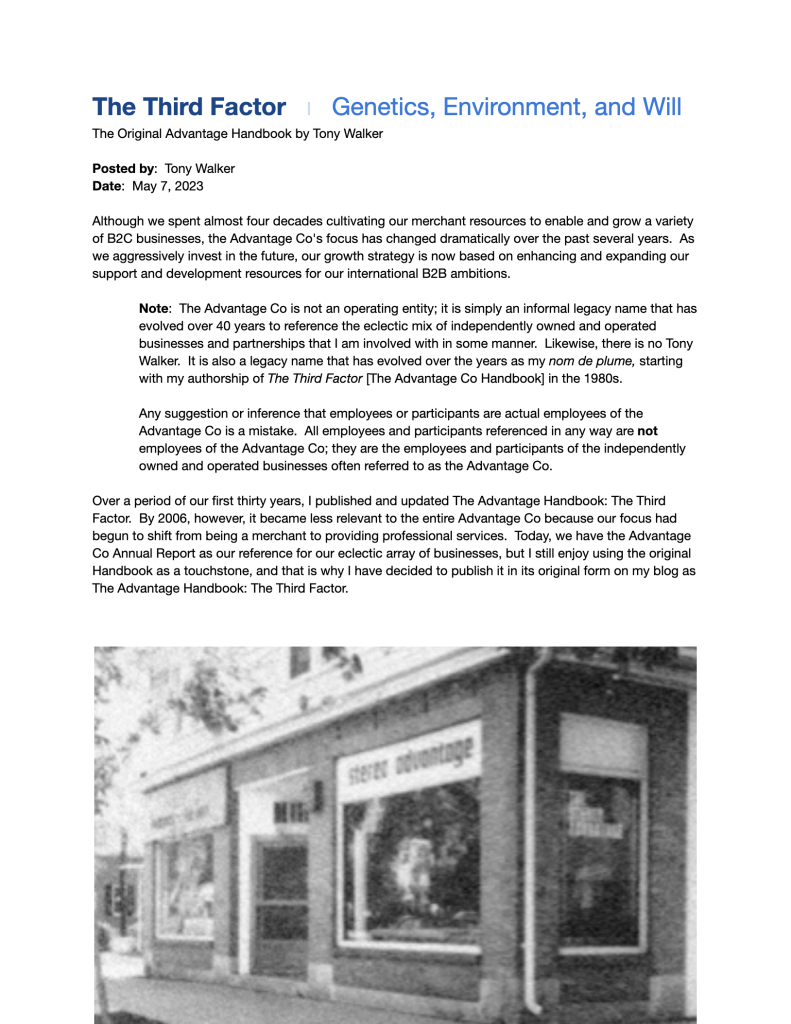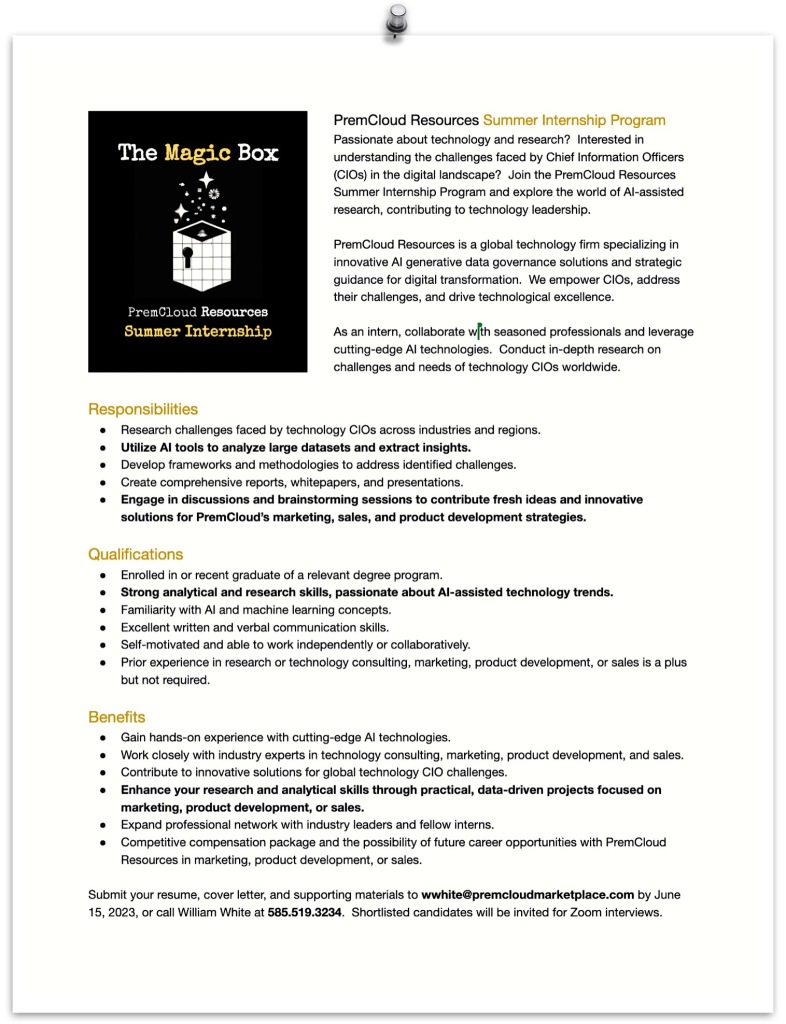
Author Archives: Tony Walker Today
Congratulations, Juliana
The Basics
My Favorite Things 012
My Favorite Detectives
Approximately 57 years ago, I first encountered the mysteries of Sherlock Holmes, penned by Sir Arthur Conan Doyle. Aside from “Shogun” by James Clavell, no other books have managed to captivate my attention so completely and continuously. I was hooked.
Sherlock Holmes

Sherlock Holmes made his first appearance in “A Study in Scarlet,” published in 1887. He is featured in a total of four novels and 56 short stories by Conan Doyle, collectively known as “The Canon.” Once you are captivated, it is easy to devour the entire series. Back then, it was binge-reading – rather than the more stupifying binge-watching. From there, I read countless pastiches, especially the trilogy by Nicholas Meyer.
Note: Nicholas Meyer is known for his contributions to the Sherlock Holmes pastiche through his novels “The Seven-Per-Cent Solution” (1974), “The West End Horror” (1976), and “The Canary Trainer” (1993). These works are not part of Arthur Conan Doyle’s original Sherlock Holmes series but are written to mimic his style and continue the adventures of the famous detective.
Hercule Poirot

My second favorite detective is Agatha Christie’s Hercule Poirot. To David Suchet’s credit, I still refuse to read the original stories for fear of compromising my full immersion into Suchet’s remarkable 24-year portrayal of the great detective. Likewise, Jeremy Brett will always be the standard by which all other Sherlock Holmes portrayals will be judged.
Both Sherlock Holmes and Hercule Poirot have had numerous adaptations over the years, with some standing out due to their representation of the characters, storytelling, and critical acclaim.
Sherlock Holmes TV and Movie Adaptations
The most notable and acclaimed adaptation of Sherlock Holmes was the series titled “The Adventures of Sherlock Holmes,” which aired from 1984 to 1994. This series is often regarded as one of the best adaptations of Arthur Conan Doyle’s works.
The Adventures of Sherlock Holmes
- Episodes: 41 episodes across multiple series, including “The Adventures of Sherlock Holmes,” “The Return of Sherlock Holmes,” “The Case-Book of Sherlock Holmes,” and “The Memoirs of Sherlock Holmes.”
- Duration: Each episode has a runtime of around 50 minutes to an hour.
- Setting: The series is set in Victorian London, maintaining the original time setting of the stories.
- Jeremy Brett as Sherlock Holmes: His portrayal of Sherlock Holmes is often considered one of the most accurate and celebrated renditions of the character.
- David Burke (in the Adventures & Return series) and Edward Hardwicke (in the Case-Book & Memoirs series) as Dr. John Watson: Both actors received praise for their portrayals of Dr. Watson.
- Plot: The series faithfully adapts various short stories and novels written by Arthur Conan Doyle, presenting a detailed and authentic representation of the Sherlock Holmes universe. It covers a wide range of cases, showcasing Holmes’s deductive brilliance and attention to detail.
- Reception: The series, and particularly Jeremy Brett’s performance, received widespread critical acclaim. It is praised for its high production values, faithful adaptation of the source material, and strong performances by the cast. Jeremy Brett’s portrayal of Sherlock Holmes has set a standard, and he is often considered the quintessential Holmes by fans and critics alike.
Sherlock (2010–2017)
- Starring: Benedict Cumberbatch as Sherlock Holmes and Martin Freeman as Dr. John Watson.
- Overview: A modern-day adaptation of Arthur Conan Doyle’s Sherlock Holmes detective stories, known for its clever writing, high production values, and strong performances.
- Accolades: The series has received critical acclaim and has won several awards, including Emmys and BAFTAs.
Sherlock Holmes (2009) and Sherlock Holmes: A Game of Shadows (2011)
- Starring: Robert Downey Jr. as Sherlock Holmes and Jude Law as Dr. John Watson.
- Overview: These films offer a more action-oriented take on the characters but maintain the essence of Holmes’s deductive reasoning and attention to detail.
- Accolades: The films were commercially successful and received positive reviews for their entertaining and stylized approach to the source material.
Hercule Poirot TV and Movie Adaptations
Agatha Christie’s Poirot (1989–2013)
- Starring: David Suchet as Hercule Poirot.
- Overview: David Suchet’s portrayal of Poirot is widely regarded as the most accurate representation of the character, capturing his mannerisms, accent, and meticulous nature.
- Accolades: The series has been praised for its faithful adaptation of Agatha Christie’s works and has garnered several awards and nominations.
Murder on the Orient Express (1974 & 2017)
- 1974 Version Starring: Albert Finney as Hercule Poirot.
- 2017 Version Starring: Kenneth Branagh as Hercule Poirot.
- Overview: Both adaptations of Agatha Christie’s famous novel have been praised, with the 1974 version noted for its ensemble cast and the 2017 version for its visuals and production design.
- Accolades: The 1974 version received several Academy Award nominations, and the 2017 version was a box office success.
Inspector Endeavor Morse

Next up is Inspector Endeavor Morse. While the joy of reading the Sherlock Holmes mysteries will never be eclipsed by TV and film adaptations, David Suchet’s Hercule Poirot convinced me of the pure enjoyment derived from watching an inspired adaptation. Such is the case with the portrayals of Inspector Morse by both John Thaw and Shaun Evans as a young Endeavour Morse.
There are a total of 102 episodes of Inspector Morse and its spinoffs, and each 100-minute episode is a compelling and entertaining movie of the first order. At this point, we are about halfway through, and we watch them sparingly for fear of running out.
Inspector Morse is a British detective drama television series based on a series of novels by Colin Dexter. It stars John Thaw as the eponymous Detective Chief Inspector Morse and Kevin Whately as his partner, Detective Sergeant Lewis. The series was produced by Central Independent Television and aired on ITV between 1987 and 2000.
Inspector Morse and its spinoffs have been critically acclaimed and have garnered a substantial fan base, contributing significantly to the British crime drama genre. The series and its spinoffs have received numerous awards and nominations, highlighting their impact and success in television. The character of Morse, with his complexities and quirks, has become an iconic figure in British television.
Inspector Morse [1987–2000]
- Genre: Crime, Drama, Mystery
- Stars: John Thaw as the eponymous Detective Chief Inspector Morse and Kevin Whately as his partner, Detective Sergeant Lewis
- Plot: The series is set in Oxford, England, and follows Morse, a highly intelligent detective with a penchant for classical music, real ale, and classic cars, as he solves various murder cases, often with the help of his sergeant, Lewis.
Lewis [2006–2015]
- Genre: Crime, Drama, Mystery
- Stars: Kevin Whately reprised his role as Robbie Lewis, who has been promoted to Detective Inspector.
- Plot: The series follows Lewis and his new partner, DS James Hathaway, played by Laurence Fox, as they solve murder mysteries in Oxford.
Endeavour [2012–2023]
- Genre: Crime, Drama, Mystery
- Stars: Shaun Evans as a young Endeavour Morse.
- Plot: This prequel to “Inspector Morse” is set in the 1960s and follows the early career of Endeavour Morse as he starts his detective work in Oxford.
MONK

No list of my favorite detectives could be complete without Monk. Tony Shalhoub is brilliant as the comically disturbed detective. Only Peter Sellers as Inspector Jacques Clouseau rivals Shalhoub’s Detective Monk. The best is that my granddaughter, Francesca, has been captivated by MONK.
“Monk” is an American comedy-drama detective television series that originally aired on the USA Network from 2002 to 2009. The series was created by Andy Breckman and is notable for its unique blend of mystery, comedy, and drama.
- Genre: Comedy-Drama, Detective Mystery
- No. of Seasons: 8
- No. of Episodes: 125
- Running Time: Approximately 42 minutes per episode
- Plot: The series follows Adrian Monk, a brilliant former San Francisco detective, who develops severe obsessive-compulsive disorder after the tragic murder of his wife, Trudy. His condition leads to his suspension from the police force, but he continues to solve crimes as a private consultant, hoping to solve his wife’s murder.
- Adrian Monk (Tony Shalhoub): The titular character, Monk is a highly intelligent detective with obsessive-compulsive disorder, which heightens his attention to detail but also hinders his social interactions.
- Sharona Fleming (Bitty Schram) and Natalie Teeger (Traylor Howard): Monk’s assistants who help him with his investigations and daily life.
- Captain Leland Stottlemeyer (Ted Levine): Monk’s former superior and a friend who often seeks his help on complicated cases.
- Lieutenant Randy Disher (Jason Gray-Stanford): A detective who works with Stottlemeyer and admires Monk’s detective skills.
- Reception: “Monk” received critical acclaim for its writing, humor, and Tony Shalhoub’s performance, earning him multiple Emmy Awards. The series developed a dedicated fan base and is considered one of the standout detective series of the 2000s, praised for its unique protagonist and engaging mysteries.
- Legacy: “Monk” is credited with paving the way for other successful detective-comedy series and remains a reference point for shows blending elements of comedy and drama within a detective procedural format.
Some of My Other Favorite Detectives
Columbo
Dirty Harry
Maigret [Jean Gabin]
Mulder and Scully [The X-Files]
Professor T
Patrick Jane [The Mentalist]
Murdoch
Jack Taylor
Max Liebermann [Vienna Blood]
Miss Scarlett
Dashiell Hammett’s hard-nosed Sam Spade
Enola Holmes
Perry Mason [Raymond Burr]
Murder in Paradise
PremCloud Career Conative Testing
Click here for the full startup profile: https://simplebooklet.com/premcloudconative#page=1

A tech adventure from Data Drop…

Click here for the story: https://www.datadrop.info/
PremCloud Resources Summer Internship
Image
The Original Advantage Handbook
Click here for The Original Advantage Handbook: https://simplebooklet.com/theoriginaladvantagehandbook


Click here for The Original Advantage Handbook: https://simplebooklet.com/theoriginaladvantagehandbook
Best-Ever Golf Upset
Image
Endpoint Management Challenges

Endpoint Management Challenges
and Eliminating Risks from Ex-Employee Hard Drives
Posted by: Tony
Date: March 28, 2023
The Great Shift to Remote Work: The Impact of the COVID Pandemic
The COVID pandemic significantly impacted businesses worldwide, forcing them to adapt quickly to a new operational dynamic that supports remote work. This shift towards hybrid or fully remote work has removed geographic restrictions for hiring and provided employees with unprecedented freedoms. However, the transition has also presented several unexpected challenges for large enterprises, particularly in the realm of IT support.
As the pandemic forced companies to transition to remote work, the percentage of employees working remotely increased dramatically. According to a survey by Global Workplace Analytics, remote work in the United States increased by 173% between 2005 and 2018, but the onset of the pandemic further accelerated this trend. By April 2020, nearly 70% of full-time employees were working remotely due to COVID-19. Remote work is projected to continue even after the pandemic. According to a Gartner survey, 82% of company leaders plan to allow their employees to work remotely at least part-time, and 47% plan to support full-time remote work. By 2025, it is estimated that 70% of the workforce will work remotely at least five days per month.
The Problem: Challenges in Supporting Remote Work
The rapid shift to remote work has created several challenges for IT departments that were once accustomed to provisioning and supporting computing assets from a centralized location. As new employees are onboarded, IT teams now must package and ship a “kit” of hardware to ensure remote workers can be effective.
In addition to the time spent supporting the initial setup, IT help desks now face more complex challenges. Downtime mitigation requests may result from external network issues, malfunctioning corporate assets, or accidental damage caused by employees. The pandemic has also exacerbated high turnover work environments, leading to more frequent offboarding of employees leaving the company.
The Strain on IT Help Desks and Financial Impact
These factors have led to IT department help desks being overwhelmed trying to support the needs of remote workers. Companies are losing millions of dollars annually in un-retrieved computing assets due to the increased costs and strains on IT departments.
The Solution: Lifetime EndPoint Resources Unified Endpoint Management
Lifetime Service, PremCloud Resources, and c1 Secure have joined forces to create Lifetime Endpoint Resources, a startup set to enter the growing market of Unified Endpoint Management [UEM]. With Lifetime Sevice’s legacy expertise in providing last-mile services, Lifetime Endpoint Resources aims to assist organizations with advanced asset management while addressing the security risks associated with unrecognized data on ex-employee devices.
For local, regional, national, and global customers, Lifetime EndPoint Resources’ Unified Endpoint Management will centralize the control and management of various device types, including computers, smartphones, and IoT devices, to improve network safety and efficiency. As the number of connected devices and network complexity grows, Lifetime EndPoint Resources’ Unified Endpoint Management [UEM] solutions are becoming increasingly crucial for organizations of all sizes.
Unified Endpoint Management [UEM] Explained
The need for comprehensive endpoint management led to the development of Unified Endpoint Management, which evolved from earlier solutions like mobile device management [MDM] and enterprise mobility management [EMM]. However, in today’s expanding remote work environment, the current UEM solutions available in the market fall well short of providing the security and compliance resources necessary for today’s more demanding controls and data governance. Lifetime EndPoint Resources now offers a unified endpoint platform for managing mobile devices, desktops, printers, IoT devices, and wearables – along with unrivaled data management and security solutions.
The Importance of Lifetime EndPoint Resources’ UEM in Modern Enterprises
The proliferation of personal devices in the workplace, driven by trends like bring-your-own-device [BYOD] policies, necessitates robust security and consistent access across all devices. Lifetime EndPoint Resources’ UEM provides enterprises with a centralized platform for management, ensuring a uniform experience for users across various devices and operating systems.
Addressing Security Risks with Lifetime EndPoint Resources’ UEM Solutions
Lifetime Endpoint Resources’ UEM solution helps organizations manage endpoints effectively, provide insights into potential risks and malware, and maintain compliance with relevant regulations. This includes addressing the security risks associated with unrecognized data on ex-employee hard drives, a growing concern in the modern workplace.
Benefits of Adopting Lifetime EndPoint Resources’ UEM
Organizations that adopt Lifetime Endpoint Resources’ UEM solutions will enjoy improved security, increased visibility into network devices and apps, and a more streamlined management process. By consolidating endpoint management into a single server, IT teams will be able to focus on other important projects without relying on multiple tools for different devices.




